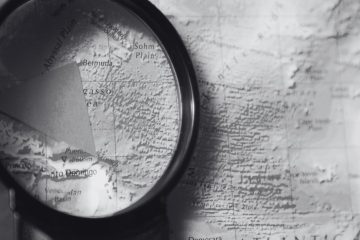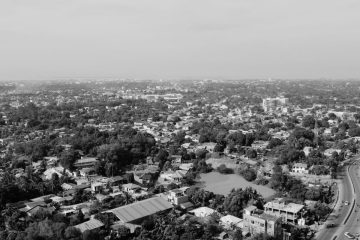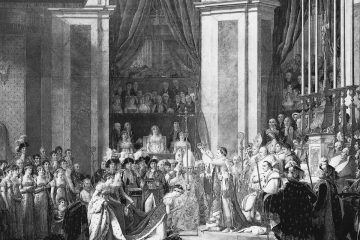What Happened On August 9th?
On the morning of August 9, 1945, the people of Nagasaki prepared for what they thought would be a normal day. At 11:02 a.m., Major Charles Sweeney flew a B-29 bomber named Bockscar over the city and dropped an atomic bomb called “Fat Man.” The bomb exploded about 1,650 feet above the ground. The explosion, with the force of 21,000 tons of TNT, flattened buildings, started fires, and sent shockwaves through the city. The Bockscar crew almost aborted the mission due to fuel concerns but managed to return to Okinawa with the required amount of gallons. Interestingly, the decision to drop the bomb came after an 11-hour flight that was supposed to last only six. The mission’s delay was due to a failed rendezvous with a backup plane, which added to the tension among the crew members.
Nagasaki had not been the original target. The U.S. military had intended to strike Kokura, but thick clouds over Kokura forced the crew to switch to Nagasaki. Clouds over Nagasaki partly shielded some areas from the bomb’s full power. Despite this, the bomb caused widespread destruction, especially in the Urakami Valley. The U.S. chose Nagasaki because of its war production, including the Mitsubishi factory, which had produced torpedoes used in the attack on Pearl Harbor. Nagasaki had been one of Japan’s most significant centers for foreign trade since the 16th century, and its international connections made it a key industrial hub.
The blast spread about a mile from the center of the explosion, destroying or burning everything in its path. The bomb destroyed the Mitsubishi Steel and Arms Works and other industrial sites, crippling Nagasaki’s contribution to Japan’s war effort. The intense heat melted glass, turned stone to dust, and caused concrete to collapse. The bomb killed over 40,000 people instantly, and fires continued to burn, destroying what remained. The blast also devastated the Nagasaki Medical College, one of the city’s largest hospitals. Despite this, surviving staff and students set up temporary medical stations to treat the injured. Among the first responders were 26 students from the college who, despite their own injuries, worked tirelessly to help others. The students’ dedication in such dire circumstances remains a powerful story of resilience and humanity.
Survivors, many badly burned and injured, wandered through the ruins in shock. The complete destruction overwhelmed them. Hospitals overflowed with the wounded, but doctors lacked the supplies to treat them. Radiation from the bomb caused symptoms that doctors did not fully understand, including severe burns, hair loss, and strange illnesses later identified as radiation sickness. By the end of 1945, over 70,000 people had died from injuries and radiation exposure. Among the casualties were 27 American prisoners of war held in a camp near the city center, a fact that remained unknown to the public for years. Another tragic detail is that these POWs had survived years of harsh conditions in captivity, only to perish in the bombing.
The bomb also destroyed the Urakami Cathedral, which had been the largest Christian church in East Asia. The explosion reduced the cathedral to rubble and killed much of its congregation. Nagasaki’s Christian community, which had a long history in the city, deeply felt this loss. The destruction of the cathedral showed how the bomb erased an important part of Nagasaki’s identity. Despite the damage, people later found a charred wooden statue of the Virgin Mary in the ruins. This statue, which miraculously survived the blast, was later moved to a new cathedral built on the site, where it remains a powerful reminder of the city’s endurance.
Nagasaki’s hilly landscape played a role in the destruction. The terrain contained the blast but also funneled it into the Urakami Valley, which worsened the damage in that area. The bomb’s heat left shadows on the stone steps of the Sannō Shrine, where people had been sitting when the bomb exploded. Another eerie remnant was the melted bronze statue of an angel from the Shiroyama Elementary School, which stood less than a mile from the hypocenter. Additionally, some survivors reported seeing strange, ghostly images etched onto the surfaces of buildings and streets—shadows left by people who had been sitting or standing near the blast site.

The bomb left Nagasaki in ruins. Hospitals quickly ran out of medical supplies, and survivors, called hibakusha, suffered long-term effects of radiation. These survivors endured various forms of cancer, chronic illness, and health problems that affected future generations. Many hibakusha also faced social stigma and discrimination, as some people believed their radiation sickness was contagious. In the years that followed, some hibakusha found it difficult to find jobs or marry, as their health status was seen as a liability.
The U.S. military dropped the bomb on Nagasaki to force Japan’s surrender in World War II. The bombings of Nagasaki and Hiroshima caused destruction that affected Japan for decades. Nagasaki’s landscape provided some protection but also concentrated the bomb’s effects in certain areas, making the destruction and suffering even worse. The U.S. targeted Nagasaki to cripple Japan’s remaining war industry and hasten the end of the war. It is worth noting that Nagasaki had been one of the few Japanese cities with a relatively large foreign population, including Chinese and Koreans, who also suffered greatly from the bombing. These communities, often overlooked in historical accounts, experienced significant losses, adding another layer of tragedy to the event.





